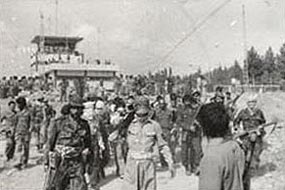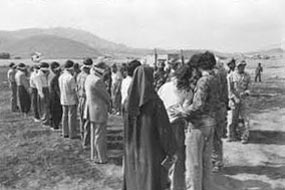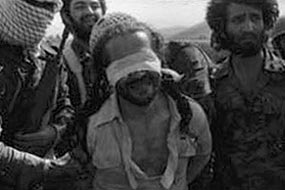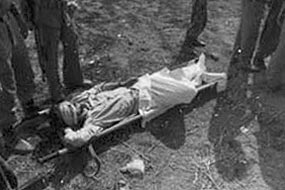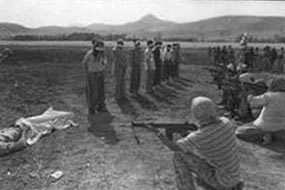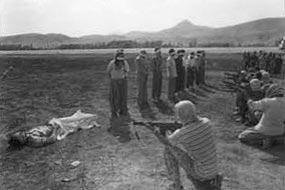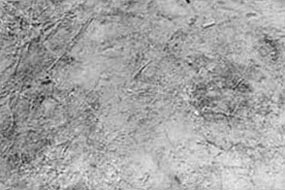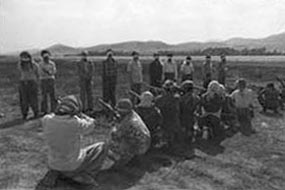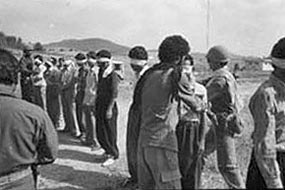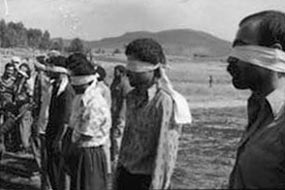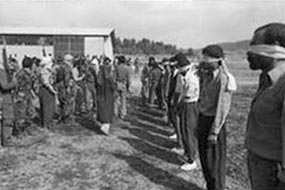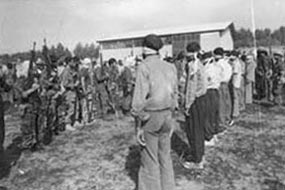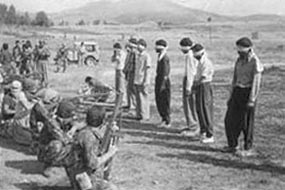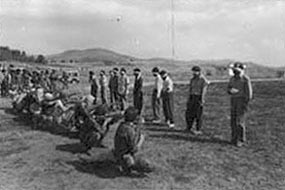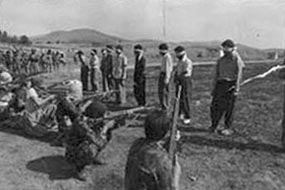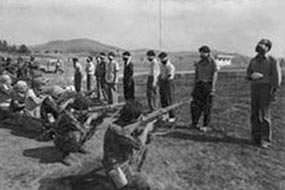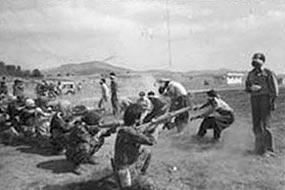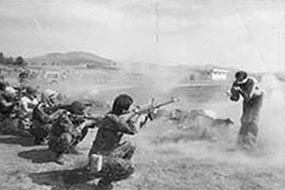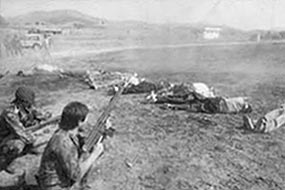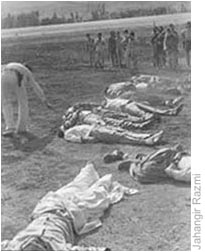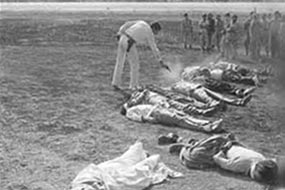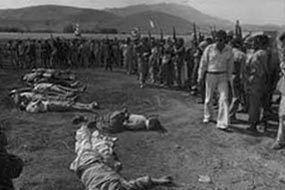Execution same
Eastern Kurds
by the Iranian regime
on Aug. 27, 1979
On Aug. 27, 1979, two parallel lines of 11 men formed
on a field of dry dirt in Sanandaj,
East Kurdistan/Iran. One group wore blindfolds. The
other held rifles. The command came in Farsi to fire: "Atesh!"
Behind the soldier farthest to the right, a 12th man also shot, his
Nikon camera and Kodak film preserving in black and white a mass
execution.
Within hours, the photo ran across six columns in Ettela'at, the oldest newspaper in Iran. Within days, it appeared on front pages around the world. Within weeks, the new Iranian government annexed the offending paper. Within months, the photo won the Pulitzer Prize.
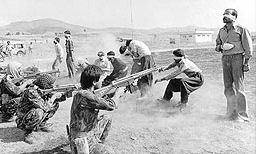 |
| Jahangir Razmi |
| The photograph that won the Pulitzer. |
Taken seven months after Islamic radicals overthrew the U.S.-backed Shah, the photo remains one of the most famous images of Iran. It is an icon of government terror, invoked in critiques of the regime from the 1979 poem "Screaming," to the 1986 music video "Speak To Me From My Land, Iran" to the 1997 book "Kurdistan." Davood and Davar Ghassemlouie, brothers who operate a photo shop in Los Angeles, say they have made tens of thousands of reprints for demonstrators, including 200 in late September when Iranian President Mahmoud Ahmadinejad visited the U.S.
Says Shahrokh Hatami, a pioneer of Iranian photojournalism: "It is the most revealing photograph of the beginning of the Iranian revolution."
Ettela'at, however, didn't print the photographer's name, fearing his safety. The Pulitzer was officially awarded to "an unnamed photographer of United Press International," the news service that distributed the photo in the U.S. It remains the only time the award has ever been given to an anonymous recipient.
In the years since, several people have falsely claimed to be "Anonymous." When Iran's most famous photographer died in 2003, his obituaries were filled with mentions of a Pulitzer some say he had insinuated winning. Last September, another prominent Iranian photographer living in France was quoted in Paris Match magazine claiming credit for the work.
In fact, nearly three
decades after the epochal photograph first appeared, almost no one knows
who took it.
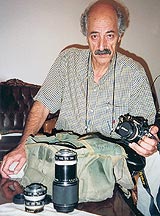
Jahangir Razmi with the Nikon camera he used to photograph an execution on Aug. 27, 1979.
Iranian photographer Jahangir Razmi, left, took 70 pictures of an execution in Kurdistan on Aug. 27, 1979. One picture (No. 20, below) won the Pulitzer Prize. It was, however, awarded to an unnamed photographer -- the only anonymous recipient in the 90-year history of the award. Mr. Razmi preserved 27 of the photos on a contact sheet and stowed it away in his home. Below are those photos -- made public for the first time.
